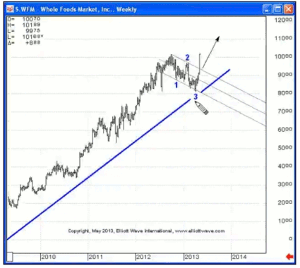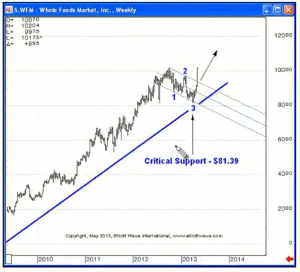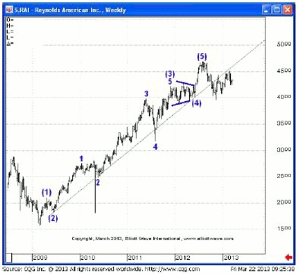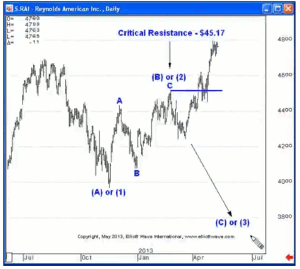Citing two real world examples for support—one that worked out and one that didn't—the staff at ElliottWave.com shows traders what to do (or not to do) in order to trade successfully with Elliott wave analysis.
After 20 years of experience applying Elliott wave analysis in real markets, our Senior Analyst Jeffrey Kennedy says that it remains the only tool that will tell him—down to the tick, to the pip, even to the penny—when his forecast is no longer viable.
That, according to Kennedy, are two most important keys to successful trading:
- “Know where you are wrong,” and
- “Don’t pick tops and bottoms”
See the logic behind Kennedy’s wisdom by reviewing these two timeless lessons from his Trader's Classroom service: Whole Foods Market, Inc. (WFM) and Reynolds American, Inc. (RAI).
WFM’s forecast was right and RAI’s was wrong. While price evidence was compelling for both issues, the forecast in WFM was in the direction of the trend and RAI’s incorporated top picking. Here’s what happened:
Price evidence called for new highs in Whole Foods Market, Inc. on May 1. We had a clearly defined uptrend, a three wave move in the direction opposite the primary trend, and the move to the downside was contained within parallel lines:
Additionally, we had a double closed-key reversal when the low was made, as well as some bullish divergence on the smaller time frames. Price evidence was very strong that this market would continue to new all time highs, so my outlook was bullish.
The bullish outlook in WFM required the April low of $81.39 to hold. The trend was clearly up from 2009 into 2013. From an Elliott Wave perspective we knew that this was a countertrend move with an ABC structure (a corrective wave pattern within a larger trending market). We had the wind at our back and were not picking a top. We simply looked at the price evidence in support of a further rally.
NEXT PAGE: What About When Things Don't Work Out?
|pagebreak|Conversely, the following example in Reynolds America, Inc. did not work out.
On March 22, I anticipated a move to the downside in Reynolds American, Inc. as a five-wave decline and the subsequent advance as a three-wave move. I was looking for a tradeable sell-off to the downside in wave (C) or wave (3):
Unlike the successful WFM example, I was not trading with the trend. Instead, I was looking for a top.
Yet I was able to prevent a losing trade from becoming a devastating trade because I could use the Elliott Wave Principle to know where I was wrong.
This bearish wave pattern was viable only as long as prices held below the February high of $45.17.
Once prices exceeded critical resistance, I knew not to look to the downside, that my outlook was no longer viable:
By the Staff of ElliottWave.com

























